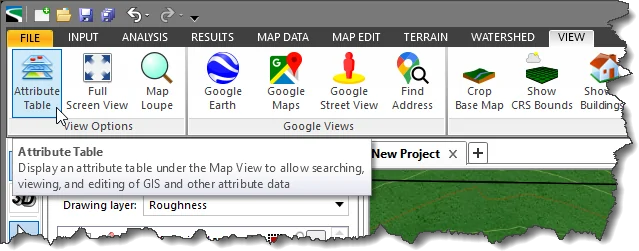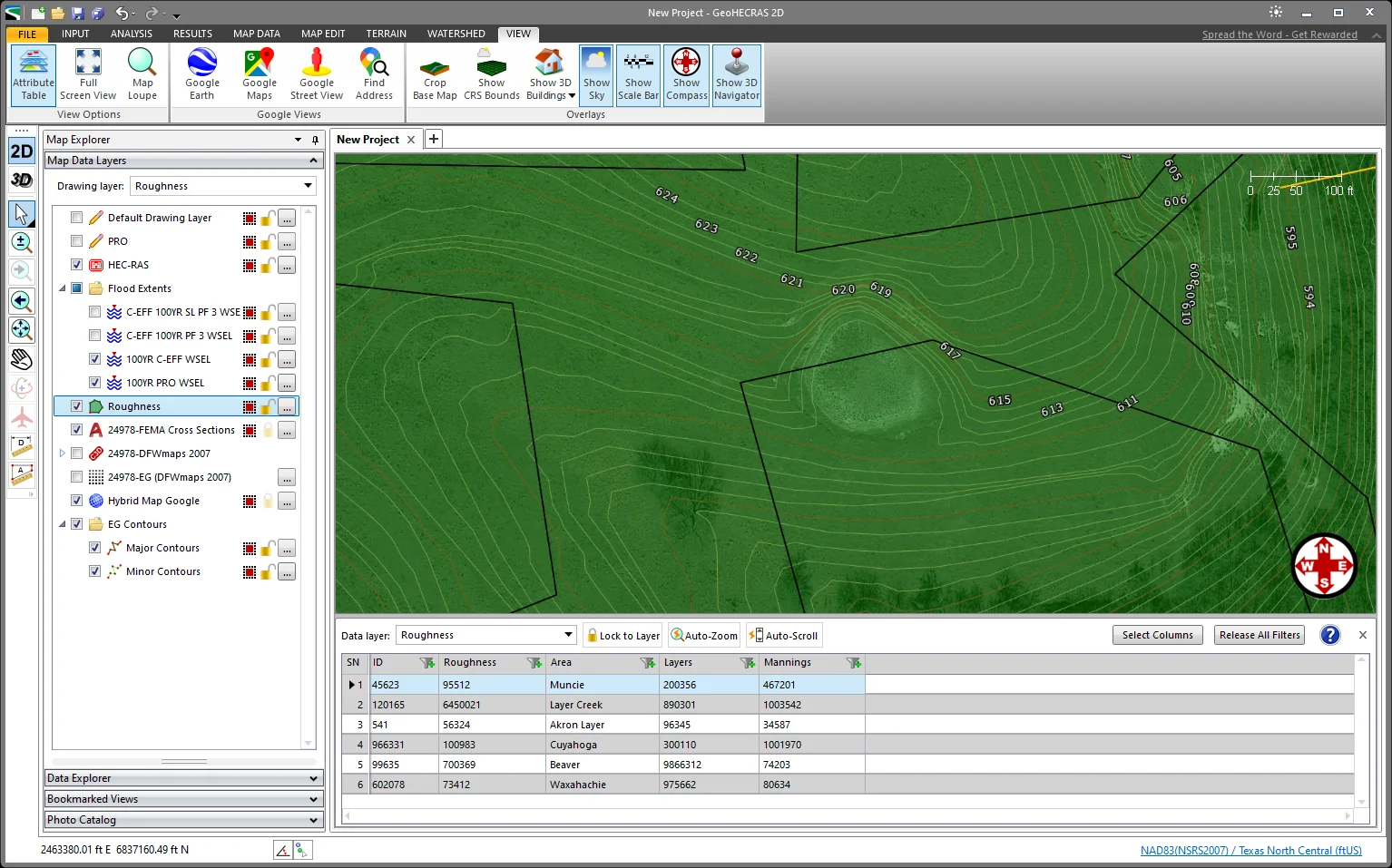CivilGEO’s engineering software allows the user to easily review and edit GIS attribute data using the Attribute Table command. The Attribute Table can be used to filter, sort, and highlight specific geospatial elements on the Map View. When changes are made to the attribute data, the changes are dynamically updated on the Map View. For example, changing a pipe size in the Attribute Table would cause the pipe size to change on the Map View.
This section describes how to use the Attribute Table command:
- From the View ribbon menu, select the Attribute Table command.

- Selecting this command will split the Map View into two parts, with the upper part being the Map View and the lower part containing the Attribute Table.

The following sections describe the Attribute Table command and how to interact with the above features of the table.
Resizing Attribute Table
The user can resize the Attribute Table’s height by clicking on and dragging the horizontal splitter that separates the two views. The minimum height for the Attribute Table is two rows whereas the maximum height can be 50% of the height of the entire tabbed view frame. The default height of the Attribute Table is 25% of the entire tabbed view frame.
Data Layer
The user can change which data layer should be displayed in the Attribute Table by selecting the data layer of interest in the Data layer dropdown combo box entry. In addition, selecting a different element type on the Map View will cause the Data layer dropdown combo box entry to change and display the data table for the selected element type.
Lock to Layer
If the [Lock to Layer] option is selected, then the software will not change to a different data layer when the user clicks on a different element type on the Map View. Note that there are two icons for the corresponding button states (i.e., locked and unlocked).
Auto-Zoom
If the user clicks on any element row in the data table view, the selected element will be highlighted on the Map View. If the [Auto-Zoom] button is enabled, the Map View will zoom to show the bounds of the selected element when a new element row is selected in the data table view.
Clicking on a data element within the Map View will cause the corresponding data table to be displayed in the Attribute Table view. If the [Auto-Scroll] button is enabled, the selected element’s attribute row will be highlighted in the data table view. The user can click on multiple elements from the Map View, and the corresponding rows in the Attribute Table will become highlighted.
Select Columns & Release All Filters
The user can use the [Select Columns] button to filter and display only the desired data fields in the Attribute Table.
Attribute Table fields are reset to show all fields when any of the following actions is performed:
- A different element type is selected in the Map View.
- A different data layer is selected in the Data layer dropdown combo box entry.
- The [Release All Filters] button is clicked.
Row Index
The leftmost column represents which data row the user is working on within the data table.
Closing Attribute Table
To close the Attribute Table, the user can either click the [X] close button on the upper right of the table view or deselect the Attribute Table menu item from the View ribbon menu.
Editing Values
If the data layer is editable, then the user can edit values contained within the data table.
